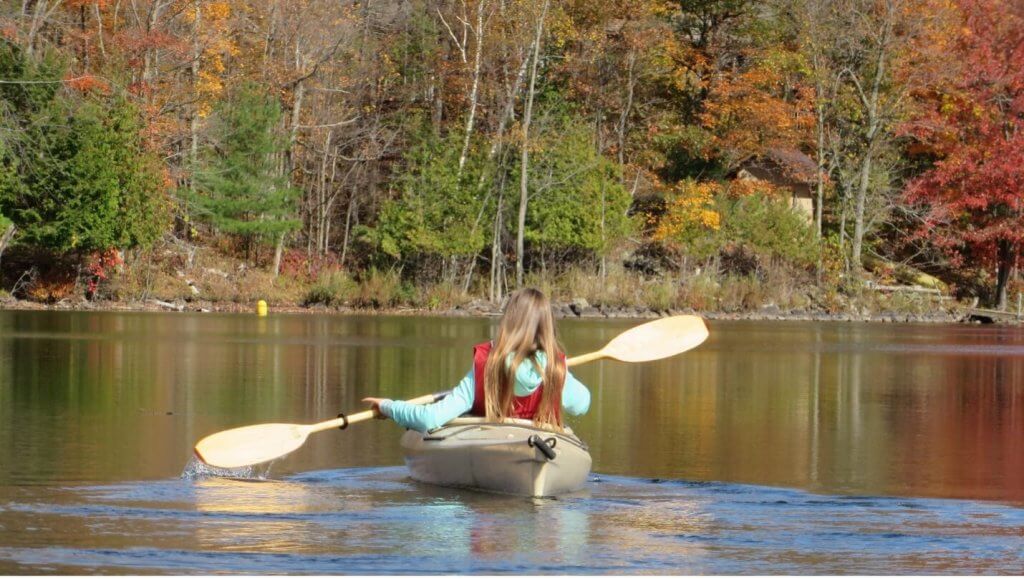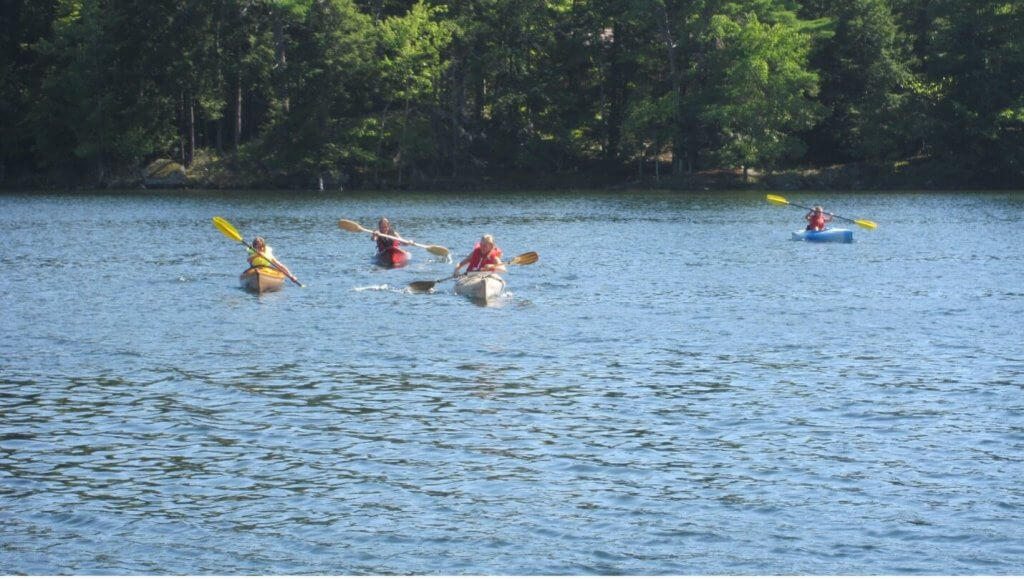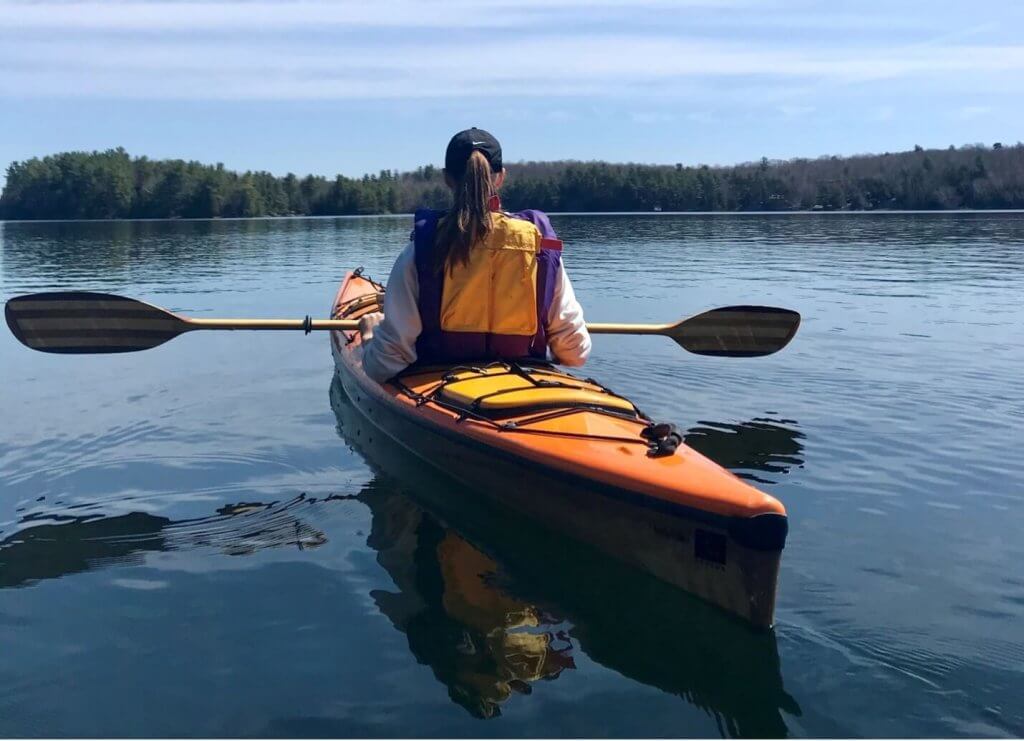“Kayaking offers a unique combination of peaceful solitude and thrilling adventure. Whether gliding through quiet waters or navigating rapids, the key to a rewarding kayaking experience lies in mastering the art of paddling. Understanding how to handle a kayak and paddle efficiently makes it easier to enjoy longer trips, improves maneuvering skills, and aids in maintaining energy throughout the journey. For those looking to develop these essential skills, a solid understanding of kayaking basics is invaluable.

Paddling a kayak involves more than just rowing through the water; it requires technique and rhythm. Grasping the basics of kayaking strokes, such as the forward, reverse, and sweep, provides the foundation for more advanced maneuvers and full control over the vessel. Additionally, being conscious of safety practices and comfort measures ensures each kayaking adventure is not only enjoyable but also secure.”
Key Takeaways
- Effective paddling techniques enhance kayaking enjoyment and endurance.
- Learning various strokes offers better control and maneuverability.
- Prioritizing safety and comfort is crucial for a pleasurable kayaking experience.
Getting Started with Kayak and Paddle

Before one heads out onto the water, knowing the ins and outs of the kayak and paddle setup is crucial. This includes selecting a suitable kayak, understanding the types of paddles available, and grasping the basics of paddle anatomy.
Choosing the Right Kayak
When it comes to kayaks, size and type are pivotal. A recreational kayak is suitable for beginners due to its stability and ease of handling. They often appreciate the snug fit of a sit-inside kayak, which is great for cooler environments as it protects from the elements. On the other hand, a sit-on-top kayak provides more freedom and is easier to re-enter in case of capsizing. It’s vital to consider the length and width of the kayak, as these will influence stability and maneuverability. Many find a kayak around 12 feet offers a sweet spot for optimal stability and maneuverability.
Types of Paddles
The paddle is a kayaker’s primary connection to the water, so choosing the right one is just as important as choosing the right kayak. Asymmetrical blades are common as they efficiently cut through the water during a stroke. Symmetrical blades, meanwhile, offer uniformity and balance. One also has to decide between curved paddle blades, which are great for powerful strokes, and flat blades, which are straightforward and versatile. Additionally, it is important to consider the material of the paddle shaft. A paddle shaft which allows for some flex (e.g. wood, carbon fibre, fibreglass) provides better feedback to the paddler than a stiff aluminum pipe.
Understanding Kayak Paddle Anatomy
The anatomy of a paddle consists of the paddle shaft and blades. The length of the paddle is important and varies depending on the user’s height and the width of the kayak; a taller kayaker or a wider kayak will require a longer paddle. Additionally, paddlers should note if the blades are feathered or matched; feathered blades can reduce wind resistance, while matched blades are easier for beginners to use. Paddle materials also range widely, from lightweight carbon fiber to durable plastics.
Basic Paddling Techniques
Paddling a kayak requires coordination, balance, and the use of specific strokes. Mastering these strokes helps kayakers maintain control and momentum on the water.

Holding Your Paddle Correctly
The foundation of efficient paddling is a proper grip on your paddle. One should hold the paddle with both hands slightly wider than shoulder-width apart, ensuring that the knuckles align with the blade. This alignment allows for better control during each paddle stroke. It’s also critical to determine if the blades are matched or feathered; matched blades are parallel, making them easier for beginners to manage.
The Forward Stroke
The forward stroke is fundamental in propelling the kayak. It involves a power phase, where the paddler submerges one blade into the water close to the front of their feet and pulls it back alongside the kayak, and a release phase, where they lift the paddle out of the water at hip level and return to the starting position. Efficient forward strokes require the paddler to engage their torso and shoulders for added power.
The Reverse Stroke
To move backward or slow down, the reverse stroke is key. This involves pushing the paddle blade forward into the water near the hip and pulling it towards the bow. This stroke not only maneuvers the kayak but also aids in maintaining balance when stationary.
The Sweep Stroke
The sweep stroke helps in changing direction. By executing a wide, sweeping paddle stroke from the bow to the stern, or vice versa, a kayaker can effectively turn their kayak. It’s important to use the whole body to steer rather than just the arms, ensuring that each sweep stroke is as powerful and controlled as possible.
By focusing on these techniques and maintaining a consistent paddle grip and stroke rhythm, any kayaker can enjoy a more effective and enjoyable experience on the water. For a great visual demonstration of the paddle strokes explained above, check out this video by PaddleTV.
Advanced Maneuvering and Control
Improving your ability to maneuver and control a kayak involves mastering a set of paddling strokes and understanding the mechanics of your vessel. Whether you’re aiming to navigate tight turns or maintain balance in rough waters, advanced skills can make all the difference.
Navigating Turns and Direction
Turns in a kayak can be executed with various strokes, but the most effective for sharp maneuvers are the sweep and reverse sweep strokes. They begin by planting the paddle at the bow or stern and following through to the opposite end, creating an arc that rotates the kayak. For more nuanced steering, one can employ the draw stroke, which involves pulling the kayak sideways towards the paddle, useful for lateral movements or adjusting the kayak’s track to stay straight.
Controlling Speed and Stability
To regulate speed and stability in a kayak, a sculling stroke is crucial. It consists of a side-to-side motion under the water’s surface, maintaining momentum and offering support without significant forward movement. The catch phase of any stroke is vital; a firm, well-placed catch ensures effective power transfer to maintain or adjust speed. Using a rudder or skeg helps in maintaining a straight course, allowing for better speed control, particularly in windy conditions or strong currents. Controlling your kayak effectively involves a delicate balance between power and finesse, with subtle adjustments making significant differences in performance.
Safety and Comfort on the Water
Before setting out on a kayaking adventure, emphasizing safety and comfort is essential to ensure an enjoyable experience. A proper personal flotation device (PFD) and a well-adjusted kayak setup, along with maintaining good posture, are crucial components.
Setting Up for Success
Selecting a PFD that fits snugly yet allows freedom of movement is the first step in ensuring safety on the water. As one prepares their kayak, they should adjust the footpegs and thigh braces for optimal control and comfort, enabling efficient paddling.
The seating position is equally important. One should sit with their back straight against the kayak’s seat, engaging their core muscles to maintain balance. A well-positioned paddler will distribute the exertion across the back, shoulders, and arms, reducing fatigue and the risk of injury.
Maintaining Proper Kayaking Posture
Good posture isn’t just about comfort; it affects paddling efficiency and control. With proper kayak paddling technique, the paddler maintains a relaxed but upright posture, allowing them to utilize their core muscles effectively. Ensuring shoulders are in line with the hips and avoiding slouching are essential to prevent strain.
For beginners, a lesson with an experienced instructor can instill muscle memory for correct paddling posture. They learn the importance of a relaxed grip on the paddle, which should be loose enough to avoid wrist strain yet firm enough to maneuver efficiently.
One should plant his feet firmly against the footpegs while sitting in the kayak, and adjusting the thigh braces ensures their legs are in contact with the boat for more precise control. By practicing and reinforcing these points, kayakers develop a natural, effortless paddling style.
Frequently Asked Questions
Navigating the waters in a kayak can be both exhilarating and relaxing. Below are some common questions for new paddlers, focusing on techniques and tips to enhance your kayaking experience.
What’s the proper technique for a beginner to start paddling a kayak?
For beginners, it’s important to get to know their paddle — the shape of the blades and the grip. They should sit comfortably, hold the paddle with both hands slightly wider than shoulder-width apart, and use their torso to power the stroke rather than just their arms.
Can you break down the best way to paddle a kayak in a straight line?
To paddle a kayak straight, one should implement a forward stroke with equal force on both sides. Keeping the blade close to the boat will help maintain a straight path. More detailed descriptions of this technique can be found in this expert advice.
How do I make my kayak go faster with my paddle?
Speed in a kayak comes from efficient and powerful paddling strokes. Paddlers should utilize a proper forward stroke and maintain a rhythm. One’s core should twist with each stroke to engage more muscles, providing additional power, as advised by Kayak Scout.
What’s the deal with sit-on-top kayaks and how should I paddle one?
Sit-on-top kayaks require the paddler to be more conscious of their center of gravity. They should keep their strokes smooth and even to retain balance and move effectively through the water. Good posture and an effective paddle technique are crucial for a rewarding experience in these kayaks.
